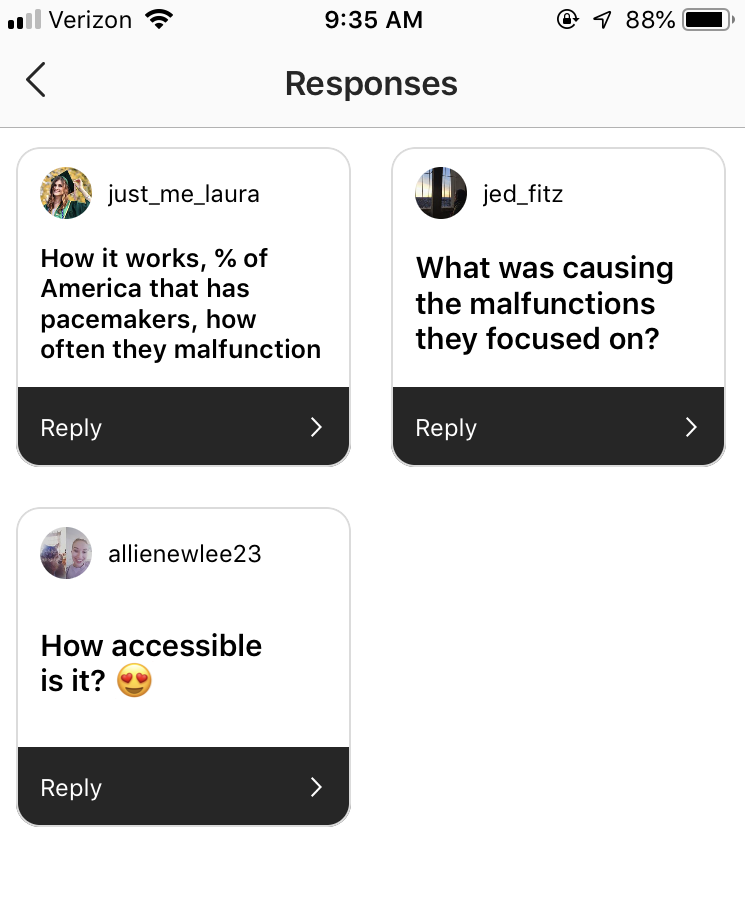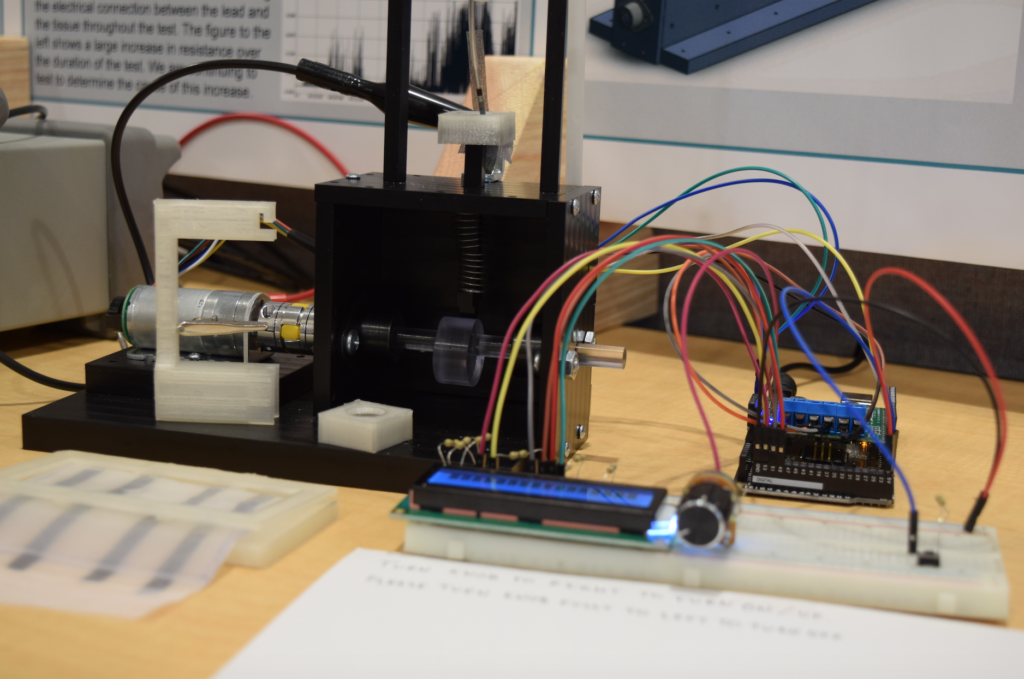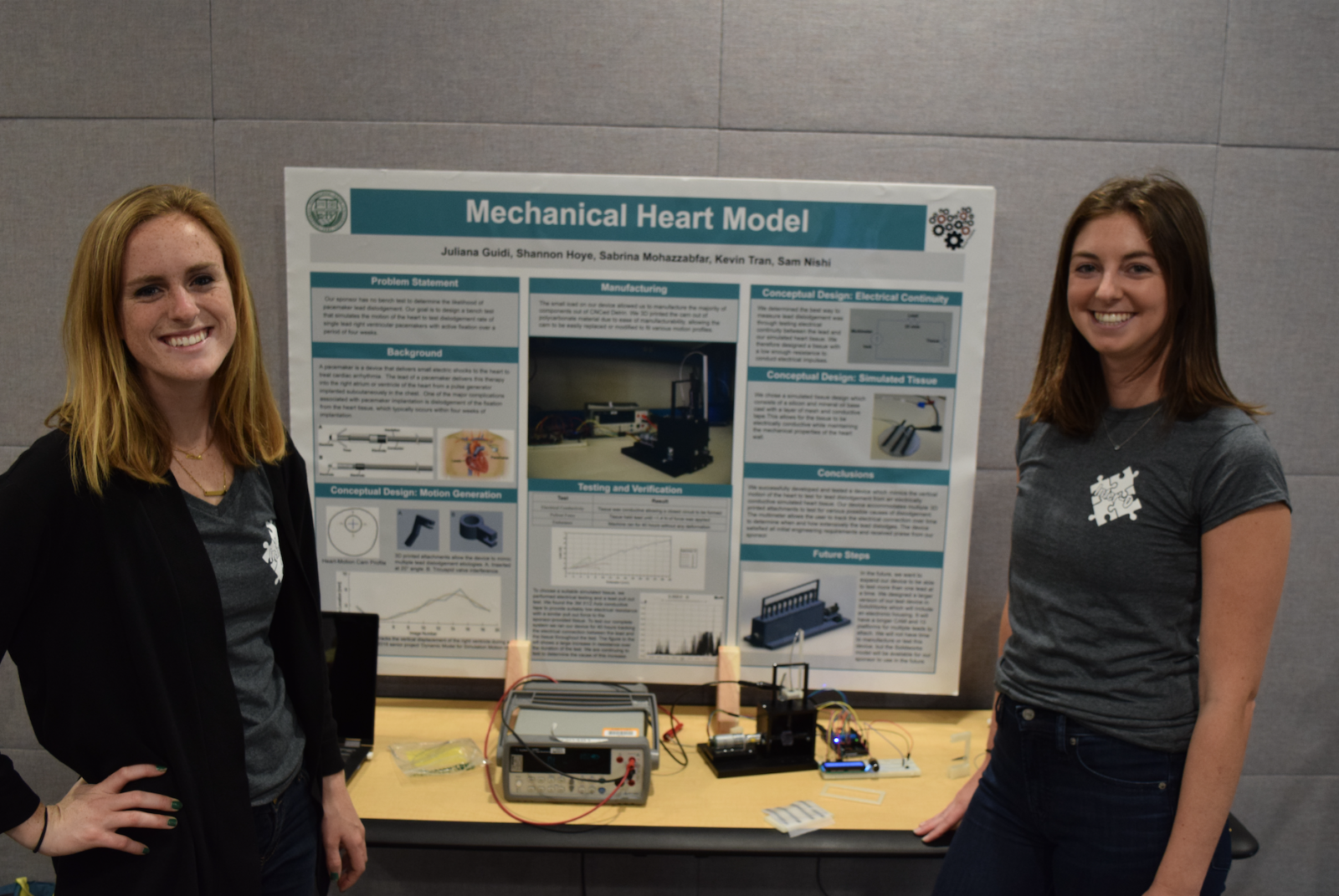Despite all of Professor Teufel’s warnings, we changed our story topic almost half way through the project. Though to our credit, it ended up being a blessing in disguise. As a journalist, it’s always uplifting to cover a story about students who find a way to fix a problem that detrimentally affects people all over the world. Their good purpose, gives us good purpose.
“It’s amazing to see Cal Poly students make a difference in the real world and the mechanical heart model is another example of this,” said Dante DiFronzo.
But we still had little time to throw together a solid angle for the story. I reached out on various social media platforms to see what our audience wanted to know about the mechanical heart model. What I found was that most of the general public, myself included, did not know that this problem of malfunctioning pacemakers was even a problem in the first place. They wanted to understand how big of a deal this was. How many people are affected? Why do pacemakers malfunction? Where is this project going from here (hint: they were awarded a grant for $5,000 from Pacemaker Inc.) Basically, the big question of all stories: Why should I care?

There was an exhibition of all of these students’ projects one Friday afternoon. Lindsay and Dante were able to attend and get all of the b-roll and interviews they needed for the video and interactive components of the project. One-and-done! As journalists, we like this. Unless you’re strategy and engagement and you happen to have work during the one and only time the exhibit is happening, but that’s besides the point. They interviewed Shanon Hoye who was able to summarize in simple terms what exactly is the problem with some pacemakers.
“One of the biggest problems with Pacemakers is after it is inserted during surgery, the actual fixation into the heart can become dislodged, which will negate any type of delivery like therapy… and so that happens within the first 3 weeks after surgery,” said Hoye.

This project was a challenge because, like most stories about STEM topics, it’s very technical by nature. We had to understand how pacemakers work, what purpose they have, how they malfunction, and how the students experimented and used their engineering degrees to craft a highly technical device. Then, we had to relay all of that jargon to the average layperson in an accessible, but accurate way.
“I really liked being able to understand something that was so complex and be able to communicate it through video in a way that is both informative and interesting. It was a challenge, but it was worth it,” said Lindsay Morris.

Overall, this project was an influential learning experience as student journalists. My wish is that if our work makes it out to the public, people who are or will be affected by pacemaker malfunction will see it and find some hope in the up-and-coming generation of biomedical engineers.
